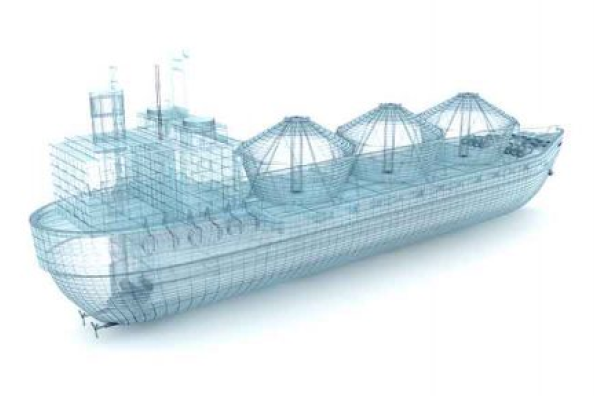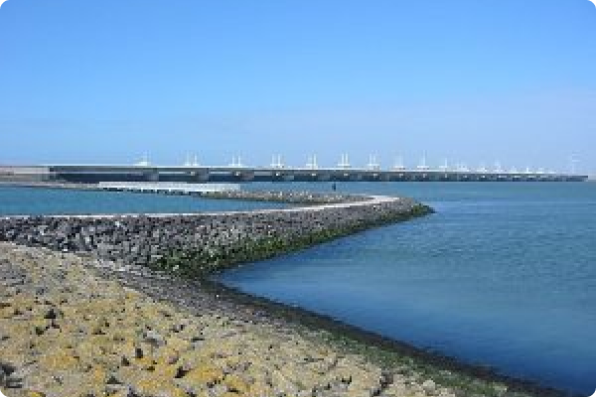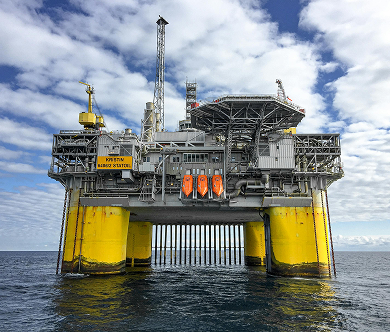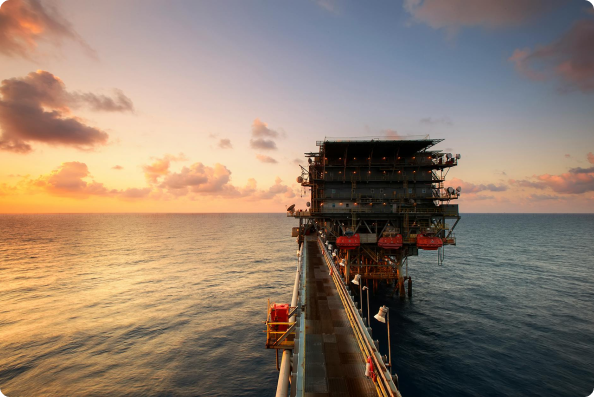
Naval Architecture is a branch of engineering that deals with design, construction, operation, repair, maintenance and certification of marine vehicles including surface ships, submarines and deep submersibles. With the knowledge so gained, naval architects can also carry out hydrodynamic and motion-response analysis of floating and compliant platforms for efficient design and safe operation. A good knowledge of the ocean environment and behavior of bodies in waves and currents is essential for the field and therefore subjects related to marine hydrodynamics constitute a significant part of the curriculum. Efficient and safe design of ocean systems hinges on good knowledge of structural mechanics and materials and hence courses in marine materials and structural analysis constitute another major part of the curriculum. As visual perception of complex ship geometry is crucial for optimizing general arrangement of ship components and cargo as well as for ship’s hydrodynamic and structural designs, courses in ship drawing and calculations are fundamental to the discipline. Courses, as electives, in dynamic systems and control; programming in machine language; micro-controller design; neural networks and machine learning; and marine instrumentation are also gaining currency in the present Naval Architecture curriculum as several key functions of future marine vehicles, including maneuvering and sea keeping, are envisaged to be autonomous.
Ocean engineering area widely covers studies on offshore structures, port and harbor, coastal structures, coastal erosion and protection, ocean energy, dredging and ocean mining, subsea pipelines and cables, underwater acoustics. For sufficient breadth, important elements of Ocean Engineering are also included, and the undergraduate program in the Department of Ocean Engineering at IIT Madras leads to the Bachelor of Technology (B.Tech.) degree in Naval Architecture and Ocean Engineering.

India has a long coastline of about 7500 km. The livelihood of the community near the coastal zone is an important aspect, particularly the role played by coastal engineers in understanding the coastal morphology and adopting a suitable design. The design, construction and analysis of ports and harbours, breakwaters, training walls, seawater intake structures come under coastal engineering. We at IIT Madras, scientifically deal with each of them through theoretical, computational and physical model studies. IIT Madras hosts India’s largest testing facilities with seven hydrodynamic test facilities under one roof. In coastal model’s scale effects plays a significant role, hence one of the Asia’s Largest Shallow Wave Basin (Sedimentation and Erosion basin) and one of the world’s largest wave flume is coming up at our Discovery Campus, IIT Madras. Presently, our alumni’s are leading some of the challenging coastal engineering projects not only in India but also abroad such as Dubai, the USA, UK and so on. So, our course programmes are as per industry requirements. Further, the curriculum is developed with the intent to add radical thinking.
Wave hydrodynamics are taught as basic courses for the students to understand the various aspects involved in the formation, transformation and breaking of a surface gravity wave. This is very essential for any ocean engineer and naval architect. Further, a thorough knowledge of the design and construction of port and harbour structures with practical case studies enables them to find good opportunities. The course content focuses on the design and analysis of various types of coastal structures and their behaviours. Apart from hard measures, coastal protection using soft measures with a focus on climate change will be dealt with in the courses. The courses will give an insight into the tranquillity requirement of harbour planning and computational models that can be employed. Reasons for beach erosion and accretion, and sediment transportation is crucial in managing the coastline. Wave energy extraction concepts are discussed to instil the booming research involved. Tsunamis and their impact on the coastline are discussed to enable the vitality of coastal engineering. Students are exposed to various mathematical formulations of the computational tool to understand them. Our faculties have developed in-house computational models for coastal engineering aspects such as Mild slope equations, Boussinesq Models, Shallow water equation models, Shoreline evaluation, Sediment transport models. These aspects are commonly used in consultancy projects internationally. A large number of courses at the U.G. and P.G. level curriculum demonstrate the mathematical and experimental knowledge to inculcate interest in the students.
In research front, we focus on the state of the art in the field, to name a few, such as climate adaptions, Ecosystem-based design solutions (artificial reefs, vegetations), Tsunami-like flow structure interactions, integrating renewable energy solutions with coastal structures leading to the blue economy, scale effects in models, wave impacts on a new type of coastal structures, overtopping, state of the art hybrid numerical model developments. We actively participate in and host international conferences in this field.

India has one of the largest Exclusive Economic Zone (EEZ) of about 2 million square km. The EEZ is a great national asset which are divided into deep-water regions and shallow water regions. In EEZ, there is a huge potential of oil extraction, mineral mining, etc. To tap these huge resources expertise in offshore engineering is essential. The offshore engineering is a branch in ocean engineering which focusses on design and development of offshore drilling technology, deep-sea technologies, sub-sea systems, fixed and floating platforms, mooring lines, umbilical cables, marine renewable energy devices, etc. The applications of such technologies are used for oil extraction in deep-sea regions, deep-sea mining of rare earth minerals, energy production, design and development of floating cities, etc. Therefore, there is a continuous development in this field. The knowledge in ocean environmental loads such as forces due to waves, winds and ocean currents are desirable to design the offshore structures deployed in harsh ocean environment. Creative, rational and critical thinking skills are essential in designing and developing experimental, computational and analytical models to investigate the hydrodynamics of the offshore structures. Fluid-structure interaction is an important part of this branch which focuses on hydrodynamics, flow dynamics and flow profiles for rigid and flexible bodies. A new field which is gaining popularity is the application of machine learning methods using a number of neural network models, to predict the flow profiles and hydrodynamic coefficients by training the data sets available already.
There are number of courses being taught for U.G., P.G. and Ph.D. streams. The most important ones are wave hydrodynamics, vibrations of marine structures, design and analysis of ocean structures, reliability studies, floating body dynamics, offshore structure installation, marine hydrodynamics, etc. To incorporate the computational knowledge, courses such as Numerical methods, applied FEM and mesh-free computation methods are offered. Experimental methods & measurements, marine instrumentation and laboratory modelling in marine hydrodynamics are offered to handle laboratory facilities available in our department and to conduct experimental model studies.
The research topics that are currently focused on is Fluid-structure interaction for flexible and rigid bodies, development of novel wave and tidal energy devices, ocean thermal energy, dynamic responses of offshore floating platforms/wind turbines, mooring analysis, wave-structure interaction, sloshing of fluids in a confined tank, health monitoring systems for offshore structures, vortex-induced vibrations (VIV), hydroelasticity, drag reduction methods, development of hydrodynamic models, etc. We constantly collaborate with universities/institutions from abroad, conduct international conferences, workshops, encourage international student exchange programs.

The Petroleum Engineering (PE) program at IIT Madras focuses on upstream activities of petroleum exploration and production with a strong emphasis on reservoir characterization through modelling as well as experimental studies.
The PE programme provides educational programs at the Master’s (M.Tech. & M.S.) and Doctoral (Ph.D.) levels. The curriculum blends scientific and engineering fundamentals with mathematical and computer applications. The programme adds the flavours of fluid dynamics, thermodynamics, heat and mass transfer along with computational fluid dynamics to the petroleum engineering graduates.
The M.Tech. and M.S. students can upgrade their degree to Ph.D. upon successful completion of the degree conversion requirement. The PE programme also offers Ph.D. as Part-time programme (for industrial people working in Chennai), External-programme (for Industrial experts working outside Chennai) and as Quality Improvement Programme (for teaching professionals).
Faculty members are active in research in a wide range of specialties within petroleum, including multi-phase fluid flow-through porous media, reservoir characterization, reservoir engineering, reservoir simulation, enhanced oil recovery, exploration and formation evaluation, seismic data acquisition and processing, petroleum geo-mechanics and offshore petroleum production. The programme also specializes on flow through fractured reservoirs; shale-gas reservoirs; CBM reservoirs; CO2 Sequestration and hydraulic-fracturing.
The PE programme is developing a broad computational base in reservoir simulation and petroleum geo-mechanics and the programme has an explicit reservoir simulation laboratory and petroleum geo-mechanics laboratory.
The PE programme growing under the umbrella of ocean engineering takes the advantage of blending the essential flavours of ocean engineering along with petroleum engineering by offering courses that include offshore drilling, deep water drilling technology, offshore oil and gas production practices, offshore oil spill and geo-mechanics applied to offshore petroleum.
The PE doctoral students from this programme have been placed at leading academic institutions in PE including IIT(ISM)-Dhanbad, IIPE-Vizag and RGIPT-Jais.
The PE MS & M Tech students from this programme have been placed at reputed industrial firms including Shell, ExxonMobil, Schlumberger and ONGC.
According to the data released by QS in 2021, IIT-Madras is at number 30 for its Petroleum Engineering (PE) programme.